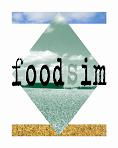
Keynote Speakers
 |
Jean-Louis Giavitto |
Modelling and simulation of dynamical systems with a dynamical structure
Dynamical systems are a framework widely used in modeling and simulation. However, there is a class of dynamical systems, very useful in the modeling of biological processes but difficult to represent and to simulate: those systems that have a structure that evolves in time. In this presentation, we present an experimental domain specific programming language, called MGS, designed to bridge the gap between the natural modeling of such systems and their simulations. MGS relies on two ideas: the structuring of the system from its spatial organization and the declarative specification of the interactions of the system's elements.
You can download the abstract here. ![]()
You can download his CV here. 

|
Kostas Koutsoumanis |
Predictive Microbiology Tools for Evaluating the Compliance of RTE Foods with the New European Union Safety Criteria for Listeria monocytogenes
This study presents predictive microbiology tools for evaluating the compliance of RTE foods with the new safety criteria for L. monocytogenes. A probabilistic modeling approach is described that combines: a) growth/no growth boundary models, b) kinetic growth models, c) data on product characteristics (pH, aw, shelf-life) and d) storage temperature data recorded from 50 retail stores in Greece. The probabilistic analysis of the above components using Monte Carlo simulation, which takes into account the variability of factors affecting microbial growth, can lead to a realistic estimation of L. monocytogenes levels in the products throughout the food-supply chain. The developed approach was also used for evaluating the probability of food spoilage. The quantitative output generated can be further used by food managers as a decision-making tool regarding the design or modification of a product’s formulation or its “use-by-date†in order to ensure compliance with the new safety criteria and quality of the products.











